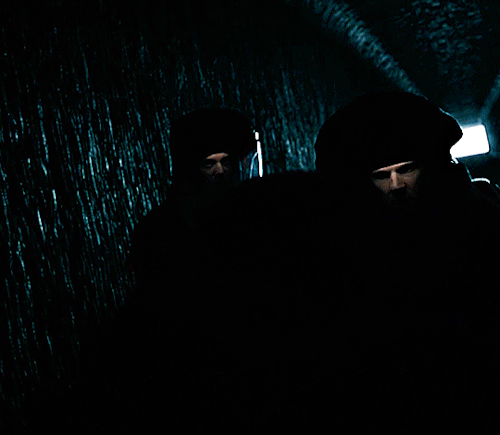Languages Of The World
Languages of the world
Arabic (اَلْعَرَبِيَّةُ)
Basic facts
Number of native speakers: 310 million
Official language: Algeria, Bahrain, Comoros, Chad, Djibouti, Egypt, Iraq, Jordan, Kuwait, Lebanon, Libya, Mauritania, Morocco, Oman, (Palestine), Qatar, Saudi Arabia, Somalia, Sudan, Syria, Tanzania (Zanzibar), Tunisia, United Arab Emirates, Yemen, (Western Sahara), African Union, Arab League, Organization of Islamic Cooperation, United Nations
Recognized minority language: Brunei, Cyprus, Eritrea, Indonesia, Israel, Mali, Niger, Pakistan, Senegal, South Africa, South Sudan, Spain (Ceuta, Melilla)
Language of diaspora: Argentina, Australia, Belgium, Brazil, Canada, Chile, Colombia, Denmark, Ecuador, El Salvador, France, Germany, Honduras, Iran, Israel, Italy, Mexico, Netherlands, Sweden, Turkey, United Kingdom, United States, Venezuela
Script: Arabic, 28 letters
Grammatical cases: 3
Linguistic typology: fusional, SVO/VSO
Language family: Afro-Asiatic, Semitic, West Semitic, Central Semitic, North Arabian
Number of dialects: 9 main groups
History
1st millennium BCE-7th century CE - Old Arabic
512 - earliest document in Arabic
7th-9th centuries - Classical Arabic
11th century - creation of the present form (Naskh) of the script
19th-20th centuries - Nahda (Arab Renaissance)
Writing system and pronunciation
These are the letters that make up the script: ي و ه ن م ل ك ق ف غ ع ظ ط ض ص ش س ز ر ذ د خ ح ج ث ت ب ا.
Both printed and written Arabic are cursive, as most letters within a word are connected to the adjacent ones. Therefore, each letter can have four different forms depending on its position in a word.
Diacritics are used only in the Qur’an, religious texts, classical poetry, children’s books, and textbooks for learners.
Words cannot begin with a vowel, so initial vowels are always preceded by a glottal stop.
Grammar
Nouns have two genders (masculine and feminine), three numbers (singular, dual, and plural), and three cases (nominative, genitive, and accusative). They are also marked for definiteness and indefiniteness.
Arabic has a root-and-pattern morphology: a root consists of a set of consonants (usually three), which are fitted into a discontinuous pattern to form words.
Verbs are conjugated for tense, mood (indicative, imperative, subjunctive, and jussive), person, number, and gender. There are two major paradigms (past and non-past), which represent a combination of tense and aspect.
Dialects
Standard Arabic can be divided into Classical Arabic and Modern Standard Arabic (MSA). The first one is the language found in the Qur’an, while MSA is used in academia, print and mass media, and legislation. The grammar described in this post is that of MSA.
Spoken Arabic can be divided into nine main dialect groups: North African Arabic, spoken in Algeria, Libya, Morocco, and Tunisia; Hassaniya Arabic in Mauritania; Egyptian Arabic; Levantine Arabic, spoken in Jordan, Lebanon, Palestine, and Syria; Iraqi Arabic; Gulf Arabic, spoken in Bahrain, Kuwait, Oman, Qatar, and the UAE; Hejazi Arabic in western Saudi Arabia; Najdi Arabic in central Saudi Arabia, and Yemeni Arabic in Yemen and southwestern Saudi Arabia.
Differences between the dialects of the Middle East are small enough to enable speakers to understand each other. However, North African Arabic varies considerably from the rest of the dialects. Dialects mainly differ in phonology, grammar, and vocabulary.
More Posts from Linguisticinspiration and Others










ARRIVAL (2016) DIR DENIS VILLENEUVE
“Language is the foundation of civilization. It is the glue that holds a people together. It is the first weapon drawn in a conflict.”

“People speak different languages, but they yearn, rejoice and declare their love in the same language - the language of the heart.”
— poetry-siir ©







come back to me. – ARRIVAL (2016) dir. denis villeneuve.








Arrival (2016) dir. Denis Villeneuve
Practising IPA like

![Get To Know Me: [2/?] Favorite Movies](https://64.media.tumblr.com/e9756ddea0c7097fb7ea5414517fbcd6/tumblr_proeff63UJ1s8uchlo4_r1_400.gif)
![Get To Know Me: [2/?] Favorite Movies](https://64.media.tumblr.com/eb7f94603660c75771f4a606ea7b060c/tumblr_proeff63UJ1s8uchlo5_r1_400.gif)
![Get To Know Me: [2/?] Favorite Movies](https://64.media.tumblr.com/ec72fcf4cc82c2d030d2f4161f9f3b24/tumblr_proeff63UJ1s8uchlo8_r1_400.gif)
![Get To Know Me: [2/?] Favorite Movies](https://64.media.tumblr.com/242ee3469da12d26f340d64fbaa37856/tumblr_proeff63UJ1s8uchlo1_400.gif)
![Get To Know Me: [2/?] Favorite Movies](https://64.media.tumblr.com/488cedabf43d611b8097d4e0ee6ea38c/tumblr_proeff63UJ1s8uchlo3_r3_400.gif)
![Get To Know Me: [2/?] Favorite Movies](https://64.media.tumblr.com/8b3554405e1daf05f78fe53e02789987/tumblr_proeff63UJ1s8uchlo2_r2_400.gif)
![Get To Know Me: [2/?] Favorite Movies](https://64.media.tumblr.com/8980eed49e1ebb45e5e40e0d4bff0735/tumblr_proeff63UJ1s8uchlo6_r2_400.gif)
![Get To Know Me: [2/?] Favorite Movies](https://64.media.tumblr.com/2c2fffbcf0c22d8553a67a92c442033a/tumblr_proeff63UJ1s8uchlo7_r1_400.gif)
![Get To Know Me: [2/?] Favorite Movies](https://64.media.tumblr.com/380e942bd2a80ca3f1f574ffafa4cc63/tumblr_proeff63UJ1s8uchlo9_r1_400.gif)
![Get To Know Me: [2/?] Favorite Movies](https://64.media.tumblr.com/9f6d31cc49f3eaea83a40267d6aacd1a/tumblr_proeff63UJ1s8uchlo10_r1_400.gif)
get to know me: [2/?] favorite movies
Despite knowing the journey and where it leads, I embrace it. And I welcome every moment of it.
Arrival (2016) dir. Denis Villeneuve

“We need to make sure that they understand the difference between a weapon and a tool. Language is messy and sometimes one can be both.”
-Arrival (2016) dir. Denis Villeneuve



Professor Bathsheda Babbling
Professor Bathsheda Babbling was a witch and professor of Study of Ancient Runes at Hogwarts School of Witchcraft and Wizardry.
Professor Babbling is the only language teacher in Hogwarts.
Anciet Runes is more than only a language in the Wizardry World given its magical properties, but still...

"I mistranslated ehwaz... It means partnership, not defence; I mixed it up with eihwaz."
—Hermione Granger after her Ancient Runes O.W.L.
The Study of Ancient Runes (commonly shortened to Ancient Runes) is an elective course at Hogwarts School of Witchcraft and Wizardry and presumably Ilvermorny School of Witchcraft and Wizardry, that can be taken by students third year and above.
It was taught by Professor Bathsheda Babbling during the 1990s at least and it is the study of runic scriptures, or Runology. Ancient Runes is a mostly theoretical subject that studies the ancient runic scripts of magic.
-
 sallygalvinhere liked this · 5 months ago
sallygalvinhere liked this · 5 months ago -
 girlsneedpeace liked this · 6 months ago
girlsneedpeace liked this · 6 months ago -
 thearcaneuniversity reblogged this · 1 year ago
thearcaneuniversity reblogged this · 1 year ago -
 thearcaneuniversity liked this · 1 year ago
thearcaneuniversity liked this · 1 year ago -
 eclaireparlalune reblogged this · 1 year ago
eclaireparlalune reblogged this · 1 year ago -
 eclaireparlalune liked this · 1 year ago
eclaireparlalune liked this · 1 year ago -
 blessedflowerspeaker liked this · 1 year ago
blessedflowerspeaker liked this · 1 year ago -
 erikaalexs liked this · 1 year ago
erikaalexs liked this · 1 year ago -
 bethlearnsarabic reblogged this · 2 years ago
bethlearnsarabic reblogged this · 2 years ago -
 justalexisgone liked this · 2 years ago
justalexisgone liked this · 2 years ago -
 dunnoyiamhere liked this · 2 years ago
dunnoyiamhere liked this · 2 years ago -
 typefacebear reblogged this · 2 years ago
typefacebear reblogged this · 2 years ago -
 typefacebear liked this · 2 years ago
typefacebear liked this · 2 years ago -
 marilearnsmandarin liked this · 2 years ago
marilearnsmandarin liked this · 2 years ago -
 gay-nidoking reblogged this · 2 years ago
gay-nidoking reblogged this · 2 years ago -
 the-badass-poet liked this · 2 years ago
the-badass-poet liked this · 2 years ago -
 angi-maximoff liked this · 2 years ago
angi-maximoff liked this · 2 years ago -
 yinlotus reblogged this · 2 years ago
yinlotus reblogged this · 2 years ago -
 thekarenina liked this · 2 years ago
thekarenina liked this · 2 years ago -
 faultinfire liked this · 3 years ago
faultinfire liked this · 3 years ago -
 17thirty8 liked this · 3 years ago
17thirty8 liked this · 3 years ago -
 awildnerdhasappeared liked this · 3 years ago
awildnerdhasappeared liked this · 3 years ago -
 awaitingescape reblogged this · 3 years ago
awaitingescape reblogged this · 3 years ago -
 honeypaa-blog liked this · 3 years ago
honeypaa-blog liked this · 3 years ago -
 lafusione liked this · 3 years ago
lafusione liked this · 3 years ago -
 queerhistorymajor reblogged this · 3 years ago
queerhistorymajor reblogged this · 3 years ago -
 gaysauruswreck liked this · 3 years ago
gaysauruswreck liked this · 3 years ago -
 joeldirtybastard liked this · 3 years ago
joeldirtybastard liked this · 3 years ago -
 im-fern-hi liked this · 3 years ago
im-fern-hi liked this · 3 years ago -
 nova--chill liked this · 4 years ago
nova--chill liked this · 4 years ago -
 tosimplybloom reblogged this · 4 years ago
tosimplybloom reblogged this · 4 years ago -
 soysuga liked this · 4 years ago
soysuga liked this · 4 years ago -
 occasional-daughter liked this · 4 years ago
occasional-daughter liked this · 4 years ago -
 leoberosis liked this · 4 years ago
leoberosis liked this · 4 years ago -
 asirshadiyasin reblogged this · 4 years ago
asirshadiyasin reblogged this · 4 years ago -
 rahslibrary liked this · 4 years ago
rahslibrary liked this · 4 years ago -
 tristful-scholar reblogged this · 4 years ago
tristful-scholar reblogged this · 4 years ago -
 lavendererose liked this · 4 years ago
lavendererose liked this · 4 years ago -
 bobpil reblogged this · 4 years ago
bobpil reblogged this · 4 years ago -
 bobpil liked this · 4 years ago
bobpil liked this · 4 years ago -
 tophatmonster94 reblogged this · 4 years ago
tophatmonster94 reblogged this · 4 years ago -
 tophatmonster94 reblogged this · 4 years ago
tophatmonster94 reblogged this · 4 years ago -
 derealisingtrashcan liked this · 4 years ago
derealisingtrashcan liked this · 4 years ago -
 langivi liked this · 4 years ago
langivi liked this · 4 years ago -
 loresimaleyna liked this · 4 years ago
loresimaleyna liked this · 4 years ago -
 grandpr1x reblogged this · 4 years ago
grandpr1x reblogged this · 4 years ago

Inspiration for a future linguist and literature professor
192 posts